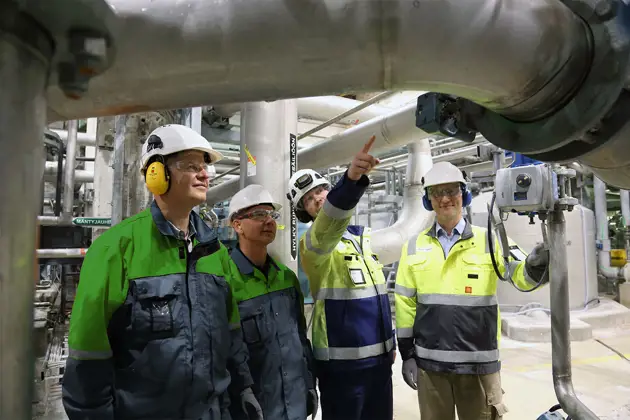Tested & Proven 3/3: Putting product quality to the test
We are known for producing premium quality valve products. And the quality of the end products we send out to market directly affects our reputation, and thus our business. This is why we can’t afford to make assumptions about quality – we test it and prove it every time.

In this third instalment of the Tested & Proven series we look at why ensuring the quality of the valve products we deliver to our customers is one of the final and most important steps in what we like to call reinventing reliability. While material selections and product and component designs have already been thoroughly tested and proven during the R&D and preproduction phases, every valve we manufacture, assemble and send to customers must be of equal and high quality.
Quality of components and delivery capabilities
Being able to adhere to delivery schedules is an equally important part of reliability in many cases, which is why any potential issues must be caught and addressed early. This is why any time we are dealing with a new product, new material or new material or component supplier we take special care and do our due diligence in terms of risk assessment. We always aim to make sure that we have at least two suppliers for every component to ensure a backup is in place.
Efficient and reliable supply chain
Developing and maintaining the capabilities of our supply chain is a vital part of continuous quality control. We set KPIs (Key Performance Indicators) for each supplier and carry out regular visits and audits. We are ensuring quality with incoming inspections focusing on material or delivery risks of components used in our valve assemblies. To ensure efficiency and minimize potential time lost in back-and-forth shipping, we prefer to carry out inspections at the supplier location with our own person or a verified 3rd party present.

The high performance of the metal-seated Neles XH ball valve requires strong expertise in both engineering and machining.
Every valve is inspected and documented
Our inspections are divided into a first part (Pilot) inspection process and a standard inspection process according to our Quality Plan. Pilot inspections on individual components typically consists of NDT (Non-Destructive Testing), including visual inspection and dimensional measurements. For the verification of quality and accuracy of cast components, this provides the needed assurance for serial production.
During and at the end of the manufacturing and assembly processes we follow standard quality control practices, which always consists of 100% inspection and pressure testing after assembly. Inspections are recorded along the way and final documentation according to customer specification is always made available.

Cryo testing is starting.
Exceeding typical customer requirements
In addition to pressure-testing the valve body, customers often have other specific tests they want their valves to undergo before they are shipped and installed. The often have specific standards related to the final intended end use environment or application of the valve, such as contact with corrosive media or use for oxygen service. Our internal standards are most often more stringent than the European or international standards that customers may require, such as the EN 16669 for example.


After cleaning the parts and passing inspection, the valve is assembled, inspected and marked.
Ensuring uniformity in products and testing
And the high internal quality standards apply to all outgoing products, not just when they are asked for. Our internal quality standards also extend to testing practices and equipment. Using the same equipment and calibration intervals for example, ensure that regardless of the Valmet facility where your valve has been tested, the quality of product and testing is the same. We want to take uniformity and quality assurance to the micron-level to take any guesswork out of the equation. We want to provide undisputable proof of quality.
FAT testing for peace of mind
FAT or Factory Acceptance Testing is always performed based on the customer request. We tend to recommend visual inspections and documentation paired with a sample size of 10% of the full valve order, to be pressure tested before delivery. Obviously, the customer can, and often does, specify additional tests such as possible cryo-testing at this phase. We are happy to oblige and even offer the possibility to attend these tests either on-site of live online (or recorded) in most cases. We welcome regular customer audits at our sites as well. We take pride in doing everything necessary to meet and exceed even the tightest specs and standards our customers throw at us.
Quality comes from confidence and experience
To be a competent quality inspector, you need to have an eye for the important details. This is something you can train for, but ultimately, it’s hands-on experience that gives a true professional their confidence and undisputed credentials. It takes years to develop the skills that are required in these positions of utmost responsibility. Of course, all of our testing staff also has all of the relevant certifications required for the job, but we additionally require them to carry out inspections on a regular basis to maintain and develop their keen senses for even the most minute discrepancies.
Quality control is an essential part of the entire value chain. As individuals we take great pride in the quality of the work we carry out for the customer, and as a company we take pride in the quality and reliability of the valve solutions we provide. To find out more about the comprehensive testing we carry out regularly, you can read the first to blogs in this series covering type testing and testing during product development.

Subscribe to our newsletter
Subscribe now to flow control newsletter and receive the latest insights directly to your email.
Subscribe